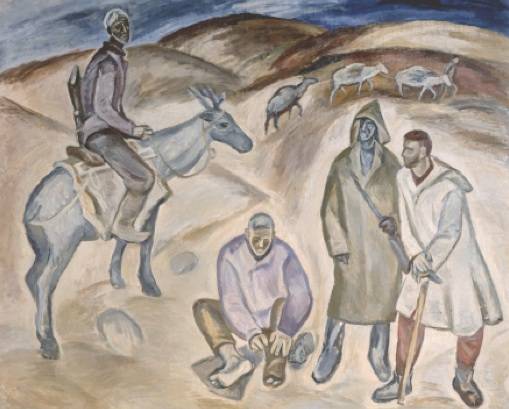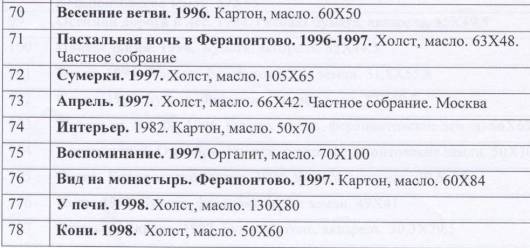By the Stove - Self-Portrait with Wife
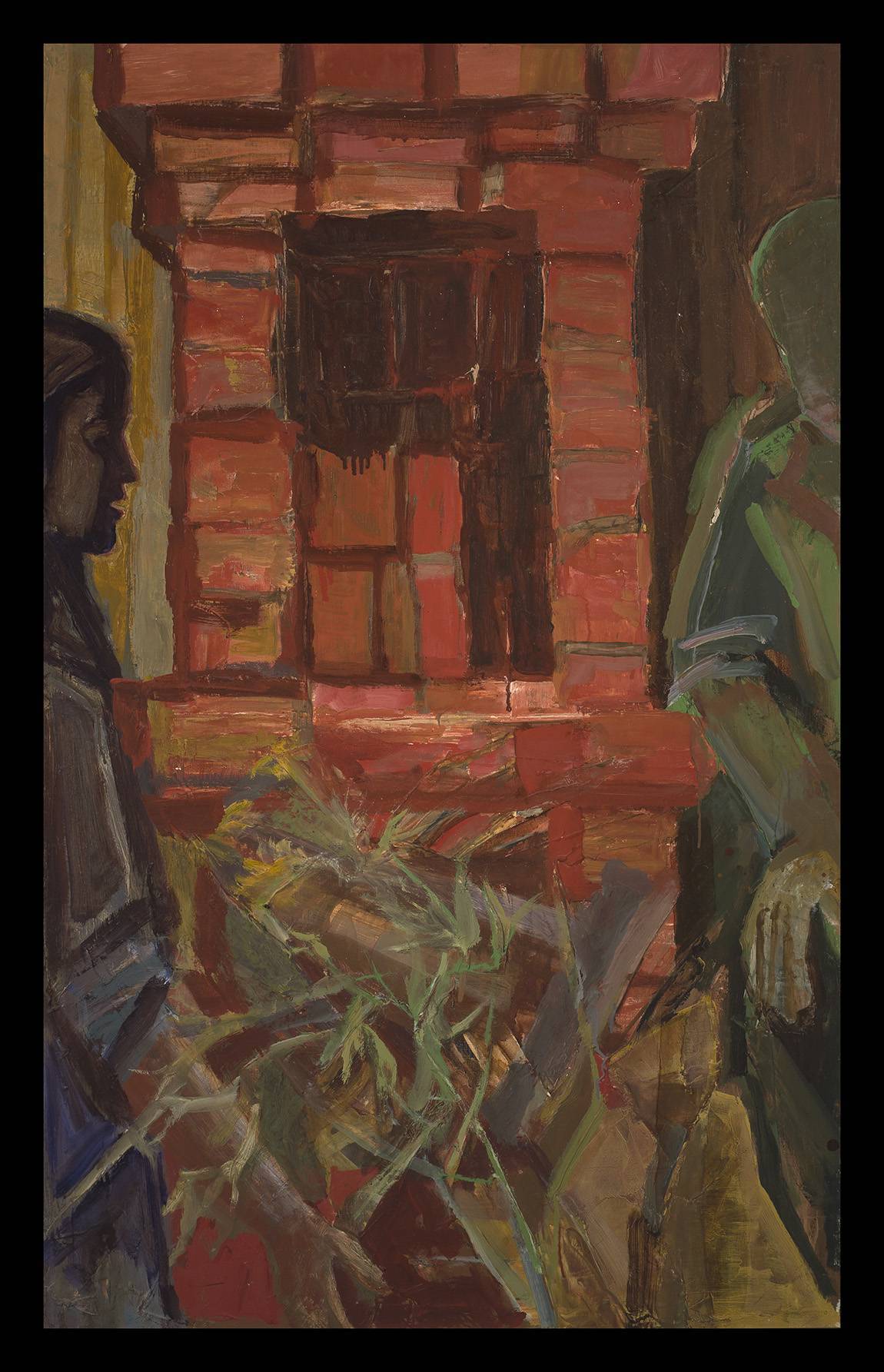
Andronov, Nikolai
1929 - 1998
By the Stove - Self-Portrait with Wife
Oil on board
130 x 80cm
1998
Inscribed on reverse
PROVENANCE:
Collection of the artist and by descent
EXHIBITED:
The Museum of Architecture in Moscow (MUAR), ‘Russia Andronova,’ June 2009, dedicated to the 80th anniversary of Andronov, listed as No. 77.
Nikolai Andronov in his Moscow studio circa 1970
By the Stove is an important painting by the leading post-war ‘Severe Style’ Moscow artist, Nikolai Andronov. The artist has depicted himself and his wife sitting by a stove. According to the artist's daughter this was the last self-portrait painted by Andronov. The painting was finished in 1998 and the painter died later that year. The artist did not give his face any features and his daughter has observed that this is a feature of his late self-portraits. The artist said he found it harder and harder to paint himself as he knew himself less and less as he grew older.
Andronov was born in Moscow in 1929 and graduated from the Surikov institute in 1954. Stalin’s death on March 5, 1953 marked the beginning of a new direction for Soviet painting and the emergence of a new style known today as the ‘Severe Style’ or the ‘Severe School’ of which Andronov was a founding member. Nikita Khrushchev came to power and delivered his so-called ‘Secret Speech,’ in which he denounced Stalin’s cult of personality and the brutality of his reign. This instigated the period now known as the ‘thaw’ that allowed increased freedoms in many areas of Soviet life including artistic production.
In the early 1950’s and after Stalin’s death and the ‘thaw,’ exhibitions of Western art came to Russia for the first time including shows of international contemporary art, Picasso and Abstract Expressionism. Nikolai Andronov, along with artists such as Geli Korzhev, Viktor Popkov, Pavel Nikonov, Pyotr Ossovski, Victor Ivanov and Tair Salahov rejected the happy cheerful subject matter of Socialist Realism and drew upon Soviet art of the 1920’s for inspiration and created the ‘Severe Style.’ They abandoned the polished classical style that was fashionable at the time and practised by artists such as Aleksandr Laktianov and presented a subject matter that they felt better reflected the grim austerity of post war Russia. Monumental paintings by Andronov, Korzhev, Popkov and Salahov used subjects drawn from daily life with simplified form, colour and a dramatic cinematic manner.
Raftsman, 1961, Nikolai Andronov, Tretyakov gallery.
Andronov’s paintings are characterized by: - a sense of truthfulness, grittiness and aloofness. The paintings are often on a large scale which led to the ‘Severe Style’s’ alternative name of Monumentalism. Andronov utilized a simple palette of muddied greys, browns and earth tones often making his own colours by necessity when in the villages in the far north of Russia.
The artist travelled around Russia drawing his subject matter from the reality he encountered. He admired the leading 1930’s artists such as Kuzma Petrov-Vodkin, Alexander Deinika and Yuri Pimenov and the Italian Neo-Realist cinema. The polished perfection of the artists of the early 1950’s was replaced with broad brush strokes and a sketchy rough quality.
|
Pavel Nikonov, Geologists, 1969, oil on canvas, 182 x 225cm.
The Tretyakov Gallery in Krymski Val now has two rooms dedicated to this period where masterpieces by Popkov, Korzhev, Andronov, Nikonov and Ivanov can be seen.
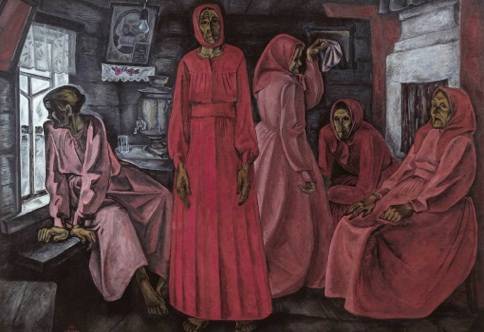
Viktor Popkov, Memories, Widows,’ 1962, oil on canvas, 160 x 234cm.
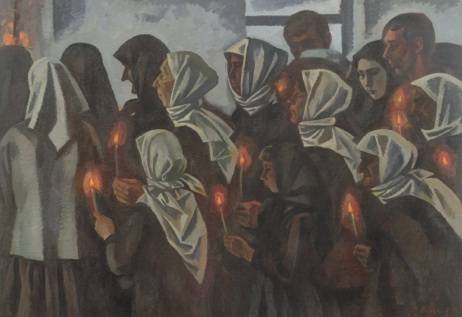
Victor Ivanov, Funeral, 1971, oil on canvas, 153 x 218cm
List of exhibited paintings in 2009 Andronov exhibition at Museum of Architecture in Moscow with By the stove, Self-Portrait with Wife listed at No. 77.
Paintings by Andronov are well represented in Russian museums with examples in: - The Tretyakov Gallery, The Russian Museum, The Museums of Fine Art in Omsk and Arkhangelsk, The Abramtsevo Estate, Rostov, Novgorod, Vologda, Kiev, and many museums in Germany and Eastern Europe.



